Reflecting on the inequalities in access to WASH in Papua New Guinea
Reflecting on the inequalities in access to WASH in Papua New Guinea
Nestled within the comforts of our everyday routines, turning taps with ease for fresh water and stepping into sanitized facilities without a second thought, it is easy to miss the harsh reality of the less fortunate ones without access to these necessities. The absence of a clean water source and a basic sanitation facility isn't just an inconvenience—it is a life-altering and life-threatening challenge faced by millions of children in the developing world. From 2015 to 2022, some progress has been achieved towards access to improved water and sanitation facilities, with safely managed drinking water access increasing from 69 to 73 per cent and safely managed sanitation increasing from 49 to 57 per cent. Yet, 1 in 4 people globally lack access to a safely managed drinking water at home and 2 in 5 people did not have a safely managed sanitation in 2022.
Children from rural and poorer households, especially girls are disproportionately affected by inadequate access to WASH. Lack of access to clean drinking water, sanitation facilities and inadequate handwashing is dangerous for children as it can lead to multiple childhood illnesses and death. 1.4 million lives are lost each year due to inadequate access to WASH facilities. Diarrhoea alone is responsible for 11% of global child deaths. Many others suffer from weakness and malnutrition as a result of parasites or environmental enteropathy—an inflammatory condition of the gut often found in residents of low-income households due to exposure to poor sanitation and hygiene. Girls, especially in rural and poorer residences bear the responsibility of fetching water for homes without supplies on premises and many drop out of school after menstruation due to inadequate sanitation facilities in schools.
Papua New Guinea stands at the forefront of these challenges, facing one of the world's most acute crises in water, sanitation, and hygiene (WASH) facilities. Data in the Child Atlas shows more than half of the population do not have access to an improved drinking water source and only about a quarter of the population have access to improved sanitation facility. The country has made good progress since the launch of the National WASH Policy 2015-2030, Joint Monitoring Programme. But concerningly, recent reports have shown a declining trend in community access to WASH, particularly in rural areas. There is also more to the story hiding behind the national averages.
A Glimpse of Disparities
The Child Atlas below brings together data on country level inequalities in both water and sanitation facilities and allows us to look deeper into the disaggregated data for Papua New Guinea. Let’s look at the data on improved sanitation facilities for instance. On average, only 23.6% of the population in the country have access to improved sanitation facilities. Looking into sub-regional data we see that sub-regions like Sadaun and Hela have less that 10% of the population who are using an improved sanitation facility compared to Morobe, Chimbu and East New Britan with about 42% to 44% of the population. In sharp contrast, almost 90% of the people living in the National Capital District have access to improved sanitation facilities.
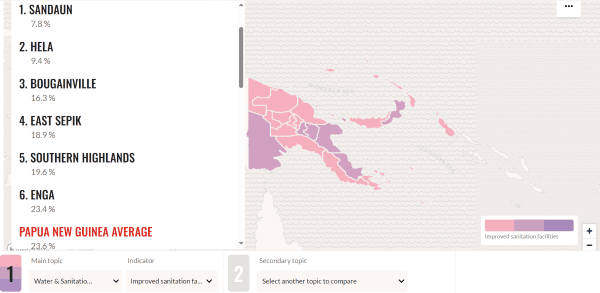
Rural-Urban and Wealth inequalities: A Closer Look
Within these regions also lie deeper inequalities between the rural and urban areas as well as between households with different wealth quintiles. The snapshot of rural-urban inequalities below shows the areas with the lowest (to the left) and highest (to the right) access to improved sanitation facilities. The data shows Hela and Morobe has the lowest inequality among the six regions, while Bougainville has the highest rural-urban inequality where only 13% of the rural population has improved sanitation facilities compared to about 75% of the urban population. We also observe that Hela is the only sub-region in the country where access of the urban population is below the national-level average.
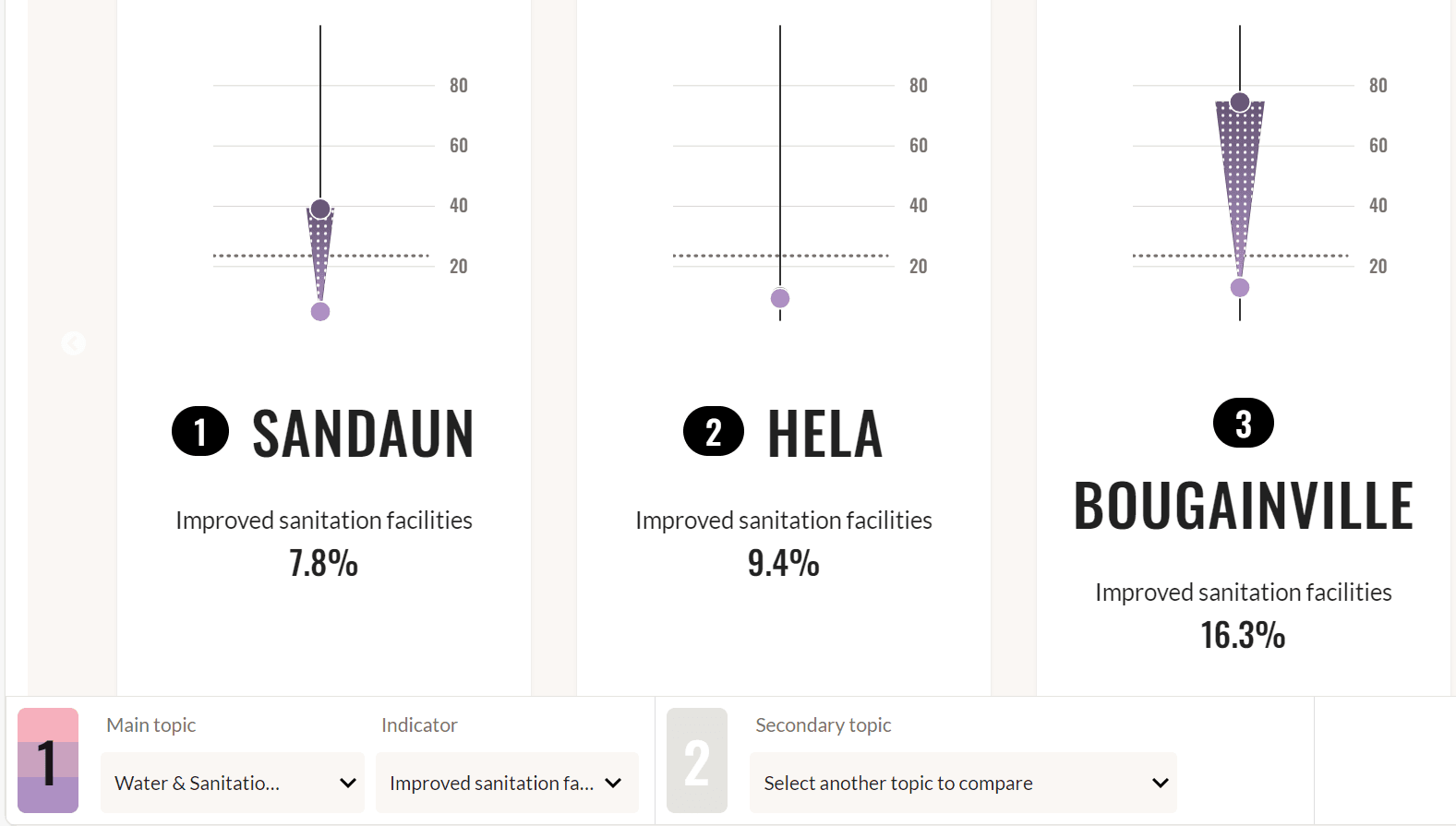
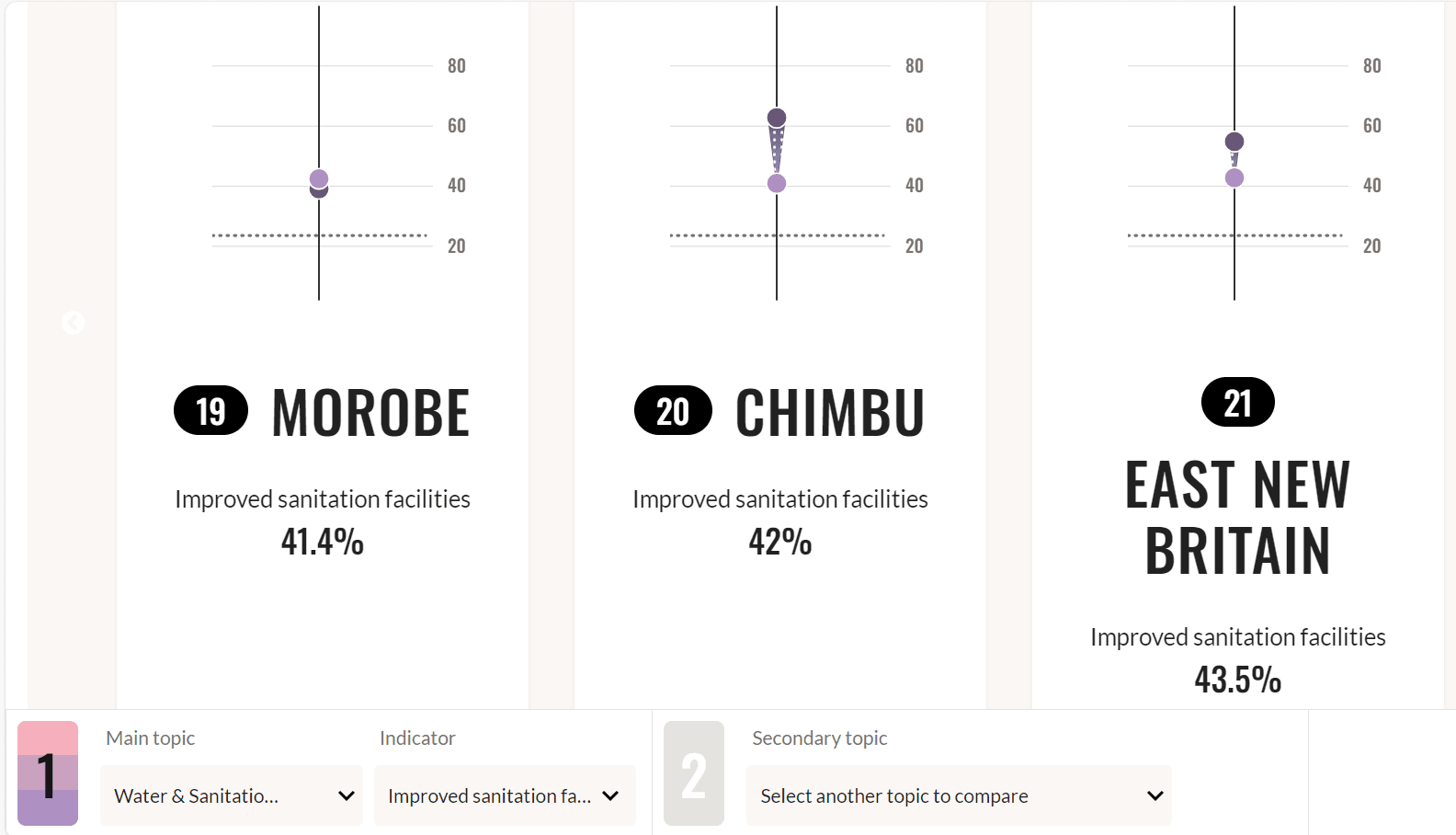
Similarly, we observe varying wealth inequalities within sub-regions as below. From the size of the triangles, it is obvious that income inequalities are much higher than urban-rural inequalities. We find wide-ranging disparities between the different groups in each sub-region. Households in the fourth wealth quintile, for example, is closer to households in the second, middle, and fourth quintiles in Bougainville, but closest to the richest households in Enga. The data also reveals interesting insights, like in Oro, we see households in the middle quintile has a lower percentage of the population with access to improved sanitation facilities than the poorest household.
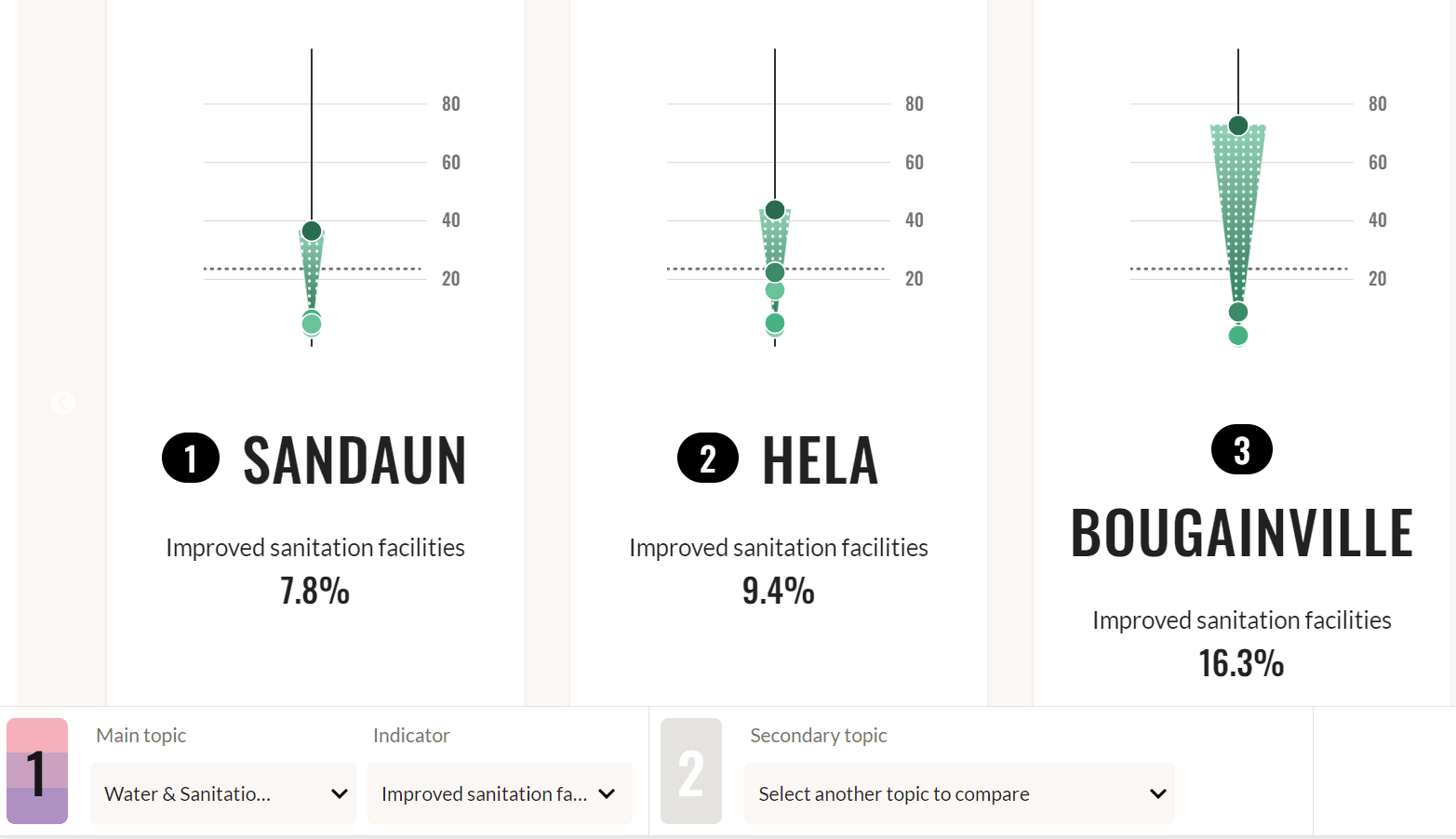
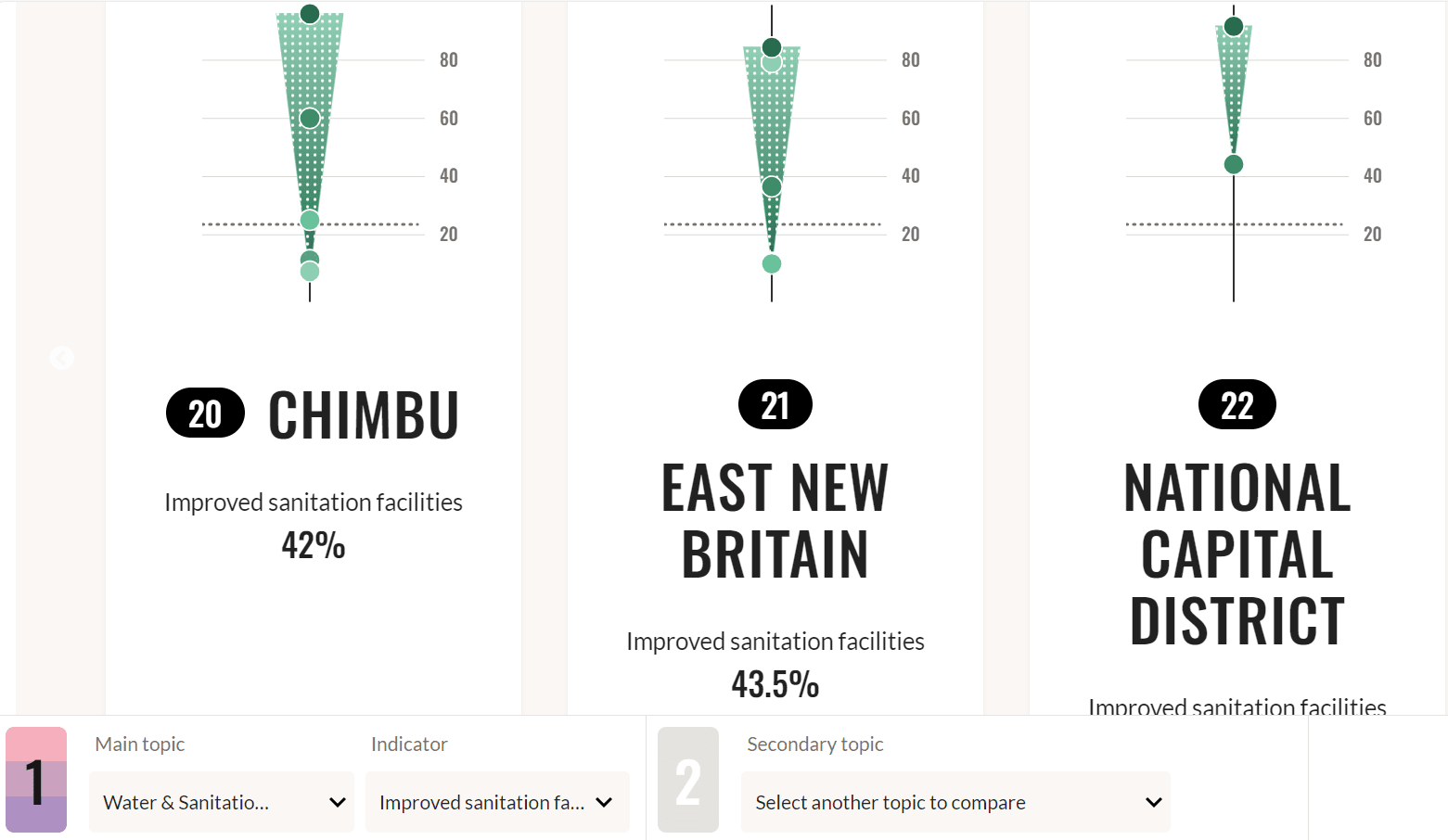
This evidence underscores the urgent need for equitable access to these fundamental rights worldwide. The disaggregated data can direct policymakers as well as international donors to plan infrastructure in the sub-regions and to allocate funds in their budgets accordingly. The 2030 Agenda for Sustainable Development Goal 6 aims to ‘ensure availability and sustainable management of water and sanitation for all’. Achieving universal coverage by 2030 will require a sixfold increase in current rates of progress for safely managed drinking water, a fivefold increase for safely managed sanitation and a threefold increase for basic hygiene services. On this World Water Day, we call on the global community, national and local governments, NGOs, civil society organisations, and communities to take collaborative action to develop market-oriented approaches to improve water quality, encourage the safe disposal of excrement, and promote the adoption of improved hygiene practices.
Related stories:
Related stories
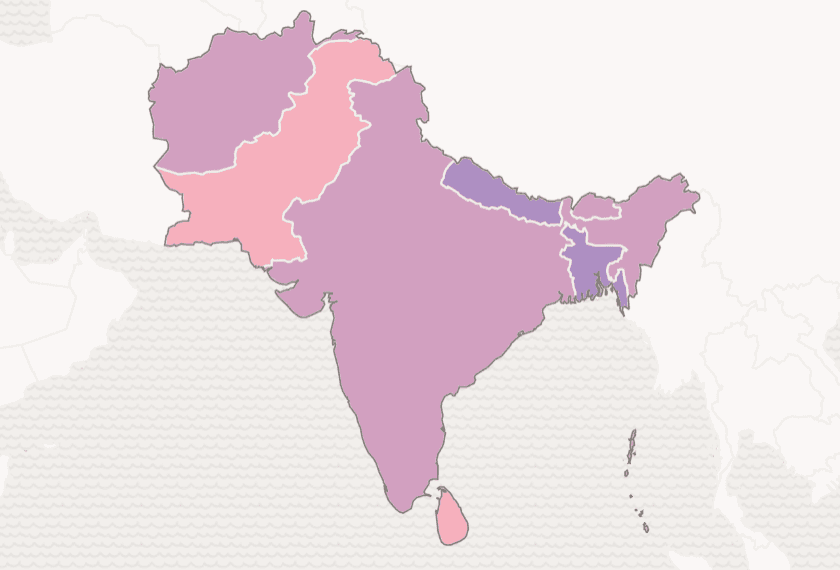
How a Soap Opera Helped to Reduce Child Marriage
Child protection (CP)
Child protection (CP)
2025-12-09

Does Insurance Benefit Child Health? Lessons from 38 Countries
Health (HL)
2025-11-19